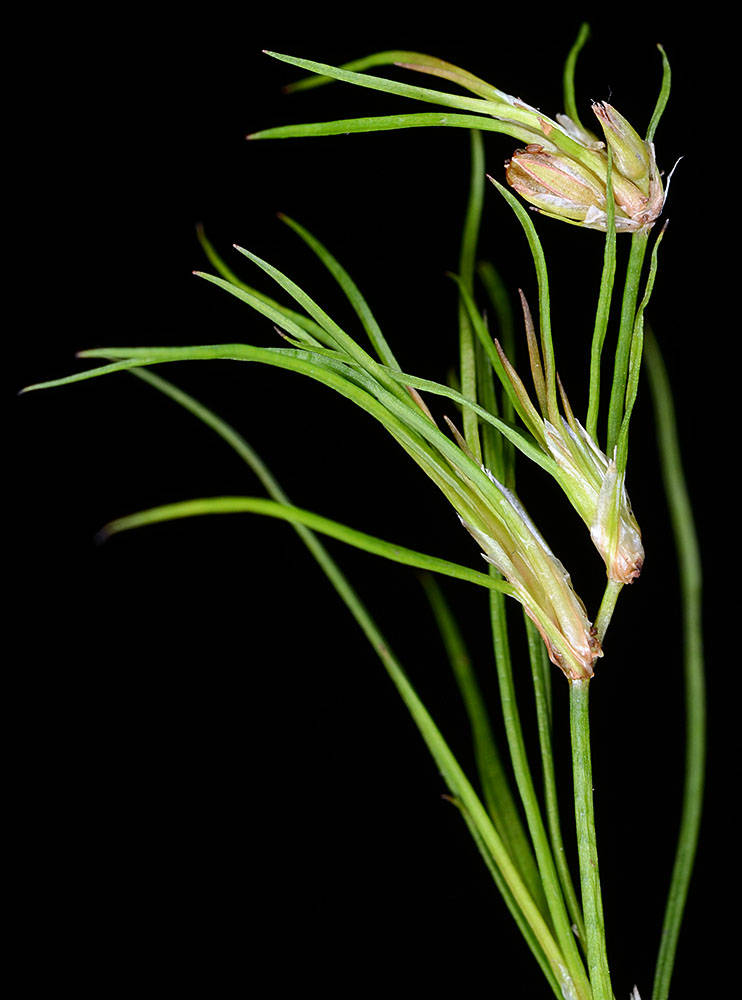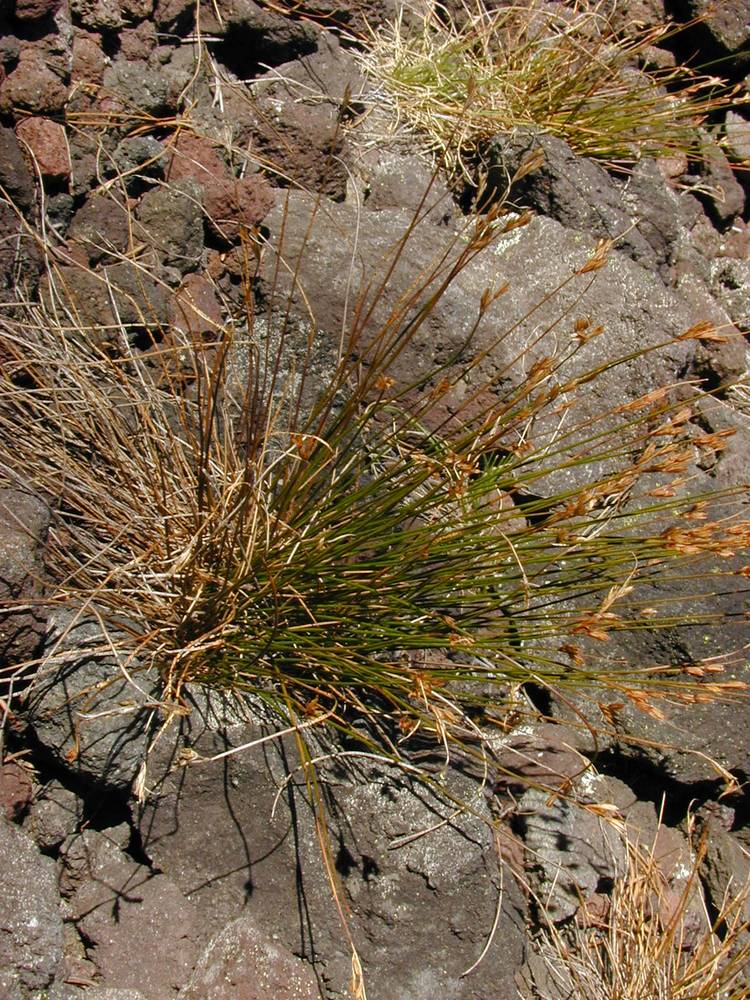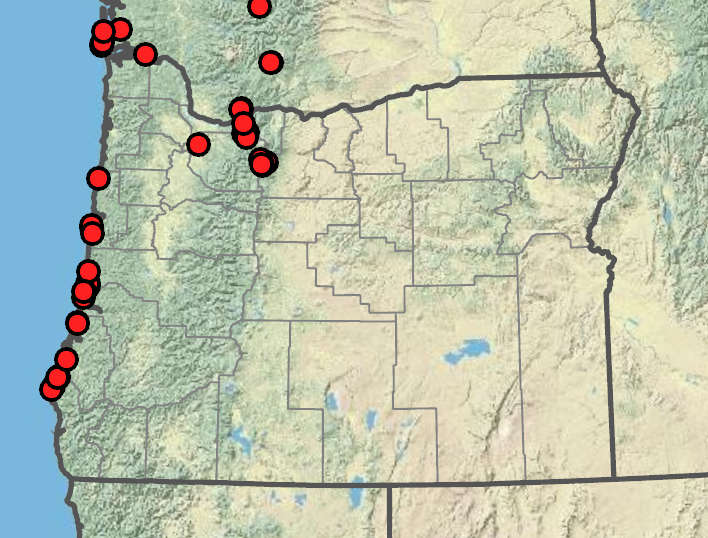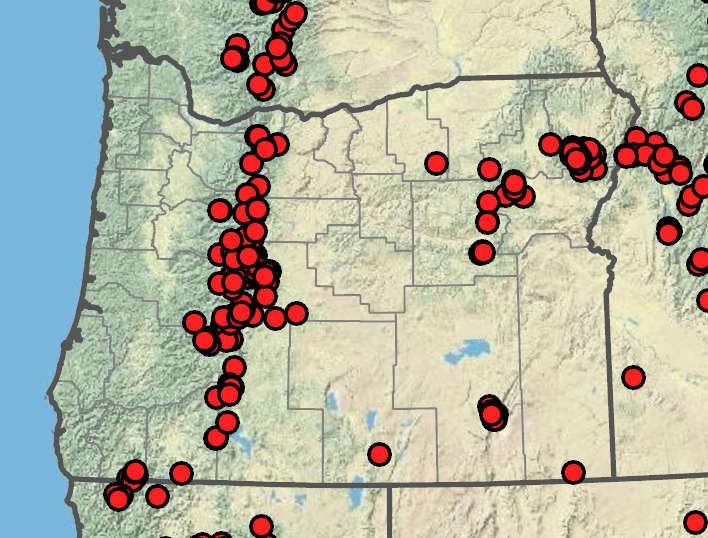Juncus supiniformis
Juncus parryi
hair-leaved rush, spreading rush
Parry's rush
numerous; capillary, 0.2– 0.3 mm wide if aquatic; round; hollow, septate;
auricles 0.8–2.1 mm.
with some terete; stem-like blades;
distal sheaths 1–5 cm, light brown or redbrown.
open, cymes of 2–9 clusters; clusters 2–5(12)-flowered, often bearing leafy bulblets.
a loose cluster of 1–3 flowers;
inflorescence bracts erect and stem-like, often longer than inflorescence.
tepals 6, 3.4–5.4 mm, brown; greenish or reddish;
inner tepal margins usually inrolled;
tips acuminate;
stamens 3 or 6;
filaments 0.8–1.5 mm;
anthers 0.5–0.8 mm;
styles 0.1–0.4 mm.
tepals 6, brown to dark brown;
stamens 6;
filaments 0.6–1 mm;
anthers 1–1.6 mm;
styles 0.3–0.6 mm.
usually 1–1.5 mm longer than the tepals, brown to dark brown; without metallic gloss, 1-chambered.
6–9 mm; longer than or equaling the tepals, brown;
apices acute to acuminate, 3-chambered.
ellipsoid to ovoid, 0.6–1 × 0.2–0.3 mm, apiculate, striate.
(1.1)1.7–2.7 × 0.2–0.3 mm;
bodies 0.6– 0.9 mm, striate; tails prominent; (0.3)0.4–0.9 mm.
Juncus supiniformis
Juncus parryi
Shores, peatlands, marshes, wet dune hollows, often in shallow water. 0–1100 m. Est, Casc. CA, WA, north to AK. Native.
Like introduced Juncus bulbosus, this species can bear bulblets in the inflorescence, and both are variable in habit depending on water levels. They differ in the shape of the tepal tips and length of the capsules. Juncus articulatus is similar but has blunter tepal tips and is common on disturbed wet ground.
Rocky slopes, scree, pumice, dry meadows, shores, ridgelines, open conifer forest, peatlands. 1100–2800m. BR, BW, ECas, Sisk, Casc. CA, NV, ID, WA; northeast to Alberta, southeast to NM. Native.
This species is often confused with J. drummondii, which lacks leaf blades and sometimes is in slightly damper habitats.
Peter Zika
Peter Zika
- Local floras:
BC,
CA,
OR,
WA
- Local Web sites:
CalFlora,
CalPhotos,
Flora NW,
PNW Herbaria
WildflowerSearch
iNaturalist (observations)
USDA Plants Database
- LBJ Wildflower Center
- SEINet
- Plants of the World Online
- Encyclopedia of Life
- Wikipedia
- Google Image Search
- Local floras:
BC,
CA,
OR,
WA
- Local Web sites:
CalFlora,
CalPhotos,
Flora NW,
PNW Herbaria
WildflowerSearch
iNaturalist (observations)
USDA Plants Database
- LBJ Wildflower Center
- SEINet
- Plants of the World Online
- Encyclopedia of Life
- Wikipedia
- Google Image Search



